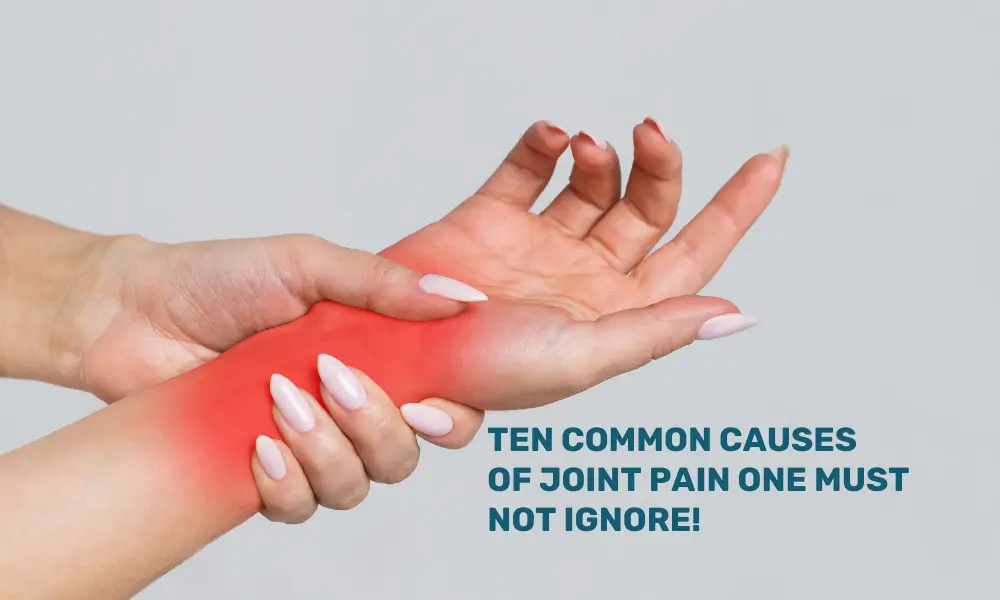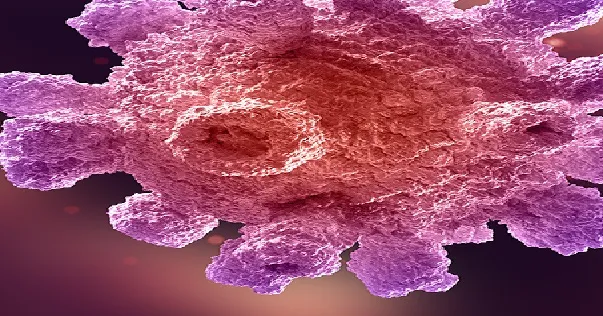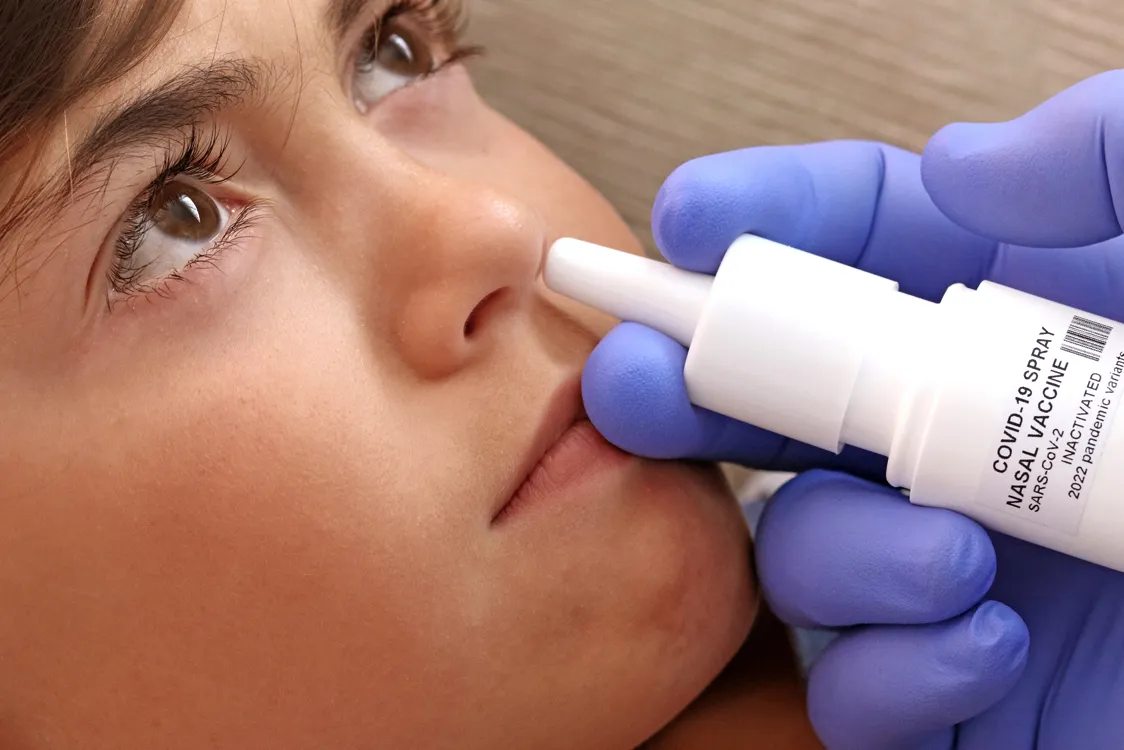Joint pains can come uninvited at any age and stage of your life. Whether you’re in your 30s or 60s, feeling stiffness, hearing the sound of your bones cracking, and having creaking elbows are signs that your bones and joints need care. According to experts, the earlier we start taking care of our bone and joint health, the better our quality of life will be in our later years.
Causes of joint pain can vary from immediate concerns, such as a viral illness or minor injury, to chronic conditions. Inflammation can cause pain due to an infectious process, the presence of crystal or mineral deposits, or issues with the immune system.
This causes swelling, stiffness, and often pain. Overuse or past trauma, or general ageing and wear and tear, can also cause pain. The underlying cause must be identified to give you the most effective treatment and pain relief.
Causes of Sudden Joint Pain
Flu: Flu is a common infectious illness caused by influenza viruses, characterized by symptoms including severe muscle or body aches, fever, chills, cough, sore throat, runny nose, and sometimes vomiting or diarrhea, particularly in children. While most people recover within two weeks without medical treatment, adults over 65, young children, pregnant women, and those with chronic conditions like asthma or diabetes are at higher risk for complications.
Post-Viral Complications: While many people recover fully from common respiratory viruses, some experience symptoms that last weeks, months, or even years after the initial infection, including joint pain. Post-viral conditions include- post-viral syndrome, long COVID, and reactive arthritis.
Autoimmune Conditions: Autoimmune diseases occur when the immune system mistakenly attacks healthy tissues, leading to joint inflammation and pain. Common autoimmune conditions that affect the joints include:
-
Rheumatoid Arthritis: Chronic inflammation causing joint pain, stiffness, and swelling; managed with medication, therapy, and exercise to prevent damage.
-
Lupus: Autoimmune disease affecting multiple organs; treatments manage symptoms and prevent flare-ups.
-
Psoriatic Arthritis (PsA): Affects 20% of psoriasis patients, causing joint inflammation; treated with medication, therapy, and exercise.
Gout: Gout is a form of arthritis caused by high levels of uric acid in the blood, which leads to the formation of sharp crystals in the joints. This results in sudden inflammation, swelling, and intense pain, often affecting a single joint, such as the big toe. Gout attacks usually peak within 12 to 24 hours after symptoms begin.
Myalgia Encephalomyelitis/Chronic Fatigue Syndrome (ME/CFS): This is a chronic condition that can develop following a viral illness, although sometimes no identifiable trigger is present. Common symptoms are joint pain without swelling, muscle aches, and headaches. Other signs include flu-like symptoms such as swollen lymph nodes, difficulty sleeping, cognitive issues known as “brain fog,” dizziness upon standing, and post-exertional malaise, where symptoms worsen suddenly after physical or mental activity.
Seven Simple Tips for Healthy Bones and Joints
Following these bone health tips to reduce the risk of debilitating joint pain that may affect our physical function could help in healthy aging:
1. Maintain healthy bodyweight
A balanced diet and regular physical activity can help maintain your Body Mass Index (BMI) within normal limits. Excess body weight can increase the stress on joints and make it difficult to move freely. Expose yourself to early morning sun rays for 15 minutes a day and add a calcium-rich meal to your diet to ensure you are getting adequate calcium and vitamin D, which are two of the most critical nutrients for bone health.
2. Stay hydrated
Water helps keep the cartilage in the bones soft and lubricated, which reduces friction between them. Aim for 10-12 glasses of water a day.
3. Don’t ignore the pain
Pain, stiffness, or swelling are the warning signs and red flags that your body gives when asking for help. Ignoring early signs can lead to long-term complications that affect your bones and joint health. Contrary to popular belief, joint pain is not a natural consequence of aging. In fact, how we treat our bodies over time—our activity levels, posture, diet, and daily habits—plays a very crucial part in our bone and joint health. Early diagnosis, orthopedic consultation, and physiotherapy can support bone and joint health. With the right habits and awareness, we can age gracefully and enjoy a healthy, pain-free life ahead.
4. Maintain good posture
Poor posture can lead to long-term issues affecting the spine and joints. Practice proper posture during standing, walking, sitting, lifting, and even sleeping. Ergonomic workspaces and proper back support while sitting are simple yet powerful adjustments that can promote good posture. Slouching is a silent killer of your spine. Sit tall and let your shoulders smile.
5. Stay physically active
Regular physical activity enhances your bone and joint health. Aim for moderate exercise for at least 30 minutes a day, three times a week. This can include something as simple as walking, cycling, doing yoga, playing sports, or dancing. Remember to start with a warmup and end with a cooldown and stretching.
6. Maintain good posture
Poor posture can lead to long-term issues affecting the spine and joints. Practice proper posture during standing, walking, sitting, lifting, and even sleeping. Ergonomic workspaces and proper back support while sitting are simple yet powerful adjustments that can promote good posture. Slouching is a silent killer of your spine. Sit tall and let your shoulders smile.
7. Ergonomics
Every day movements—from lifting grocery bags to bending over to pick something up—can impact your joints. Avoid jerky or sudden movements. Proper posture and techniques are just as crucial as the workout itself—use your knees, not your back, when lifting; wear appropriate footwear; and maintain good technique while moving. Lift smart, not heavy.
The Bottomline
Make lifestyle changes that help make a long and healthy life. Avoid smoking and alcohol consumption, both of which affect bone density and healing. Eat healthy to maintain a healthy weight. Even small lifestyle changes can lead to significant improvements. To consult a specialist – CLICK HERE!
Disclaimer: This article is meant for informational purposes only and must not be considered a substitute for professional advice.





